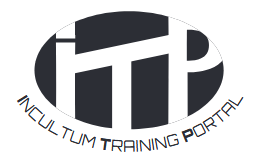ITP >> Training resources from the project’s activities >> Guide to structural funding
Targets: public administrators, tourism professionals, cultural managers
The INCULTUM project focuses on promoting cultural tourism in Europe’s peripheral regions, leveraging European Structural and Investment Funds (ESIF). This report analyzes the experiences of INCULTUM pilots with ESIF, providing insights into their application, management, and impact on cultural heritage projects.
The Guidelines are publicly accessible and allow the maximum re-usability. Download (PDF)
Please don’t hesitate to contact responsible partner University of Southern Denmark for further information
Prof. Dr. Karol Jan Borowiecki, Professor in Economics, University of Southern Denmark, Department of Economics – email: kjb@sam.sdu.dk
This report analyzes the experiences of INCULTUM pilots with the European Structural and Investment Funds (ESIF), providing insights into their application, management, and impact on cultural heritage projects.
Three areas of challenges and opportunities are analysed in the guide:
Administrative complexity
Pilots frequently encountered bureaucratic challenges in accessing and managing ESIF, demonstrating an existing administrative complexity that risks to jeopardise the success of the actions.
Local Engagement
The closest alignment with local contexts and the active involvement of community stakeholders are factors of success.
Innovation and Sustainability
Innovative approaches in project design and a focus on
sustainability were key factors in the success of several pilots.
Some recommendations are then illustrated for the use of the managers of the programmes to orientate their policy and fund design:
Streamlining application processes
Procedures needs to be simplified and supportive services are necessary for applicants to enhance the accessibility of to the Funds.
Applying community-centric approaches
Projects that are designed as rooted in local needs and that are able to involve communities in planning and implementation should be encouraged.
Balancing innovation with tradition
The integration of modern technologies with traditional practices in cultural heritage projects is worth to be fostered in the implementation of the funding programmes.
The integration of modern technologies with traditional practices in cultural heritage projects is worth to be fostered in the implementation of the funding programmes.
An overview is then provided on of how the INCULTUM pilots cope with the objectives indicated in the Common Provisions Regulation and with the Smart Specialisation Strategies (S3) approach.
Eventually, a set of integrated guidelines are presented, aimed at enhancing the effectiveness, accessibility, and impact of ESIF:
Streamlining and Simplifying Procedures
A key recommendation emerging from the pilot experiences is the need to streamline and simplify the application and management processes for ESIF. This involves reducing bureaucratic hurdles through clearer and more straightforward guidelines and documentation requirements. Establishing dedicated support systems to assist applicants throughout the application process can significantly ease the administrative burden. These systems would provide guidance, clarification, and assistance in navigating the complexities of fund management, ensuring that cultural heritage projects can be implemented more efficiently and effectively.
Adaptive and Responsive Funding Approaches
The variability in cultural heritage projects necessitates adaptive funding models. Funds need to be flexible enough to accommodate unique project needs and responsive to regional specificities. Tailoring ESIF policies to regional contexts ensures that they address the specific cultural, historical, and socio-economic characteristics of different areas. This includes allowing for adjustments in project scopes and timelines to cater to unforeseen challenges and changes in local conditions.
Collaborative Networks and Community-Centric Approaches
Collaboration among various stakeholders, including local authorities, cultural heritage experts, and community groups, enhances the impact and sustainability of ESIF-funded projects. Projects should be designed with a community-centric approach, ensuring that they are grounded in local needs and perspectives. This not only fosters a sense of ownership among local communities but also ensures that the benefits of these projects are widely shared and contribute to social cohesion.
Sustainable Development and Environmental Considerations
Sustainability should be a cornerstone of ESIF initiatives, with projects designed to contribute to the long-term economic and social development of the region. Incorporating environmental sustainability principles is essential, promoting practices that preserve and protect cultural heritage sites. This approach ensures that cultural heritage projects contribute positively to both the community and the environment.
Innovation, Inclusivity, and Accessibility in Cultural Heritage Projects
Innovative approaches to cultural heritage preservation and promotion, such as the use of digital technologies and novel conservation techniques, should be encouraged. Projects should be designed to be inclusive and accessible, catering to diverse audiences and contributing to greater social cohesion and cultural understanding. By integrating these principles, ESIF can play a pivotal role in not only preserving cultural heritage but also in fostering cultural understanding and appreciation across diverse communities.
Further reading:
European Court of Auditors report 2021






